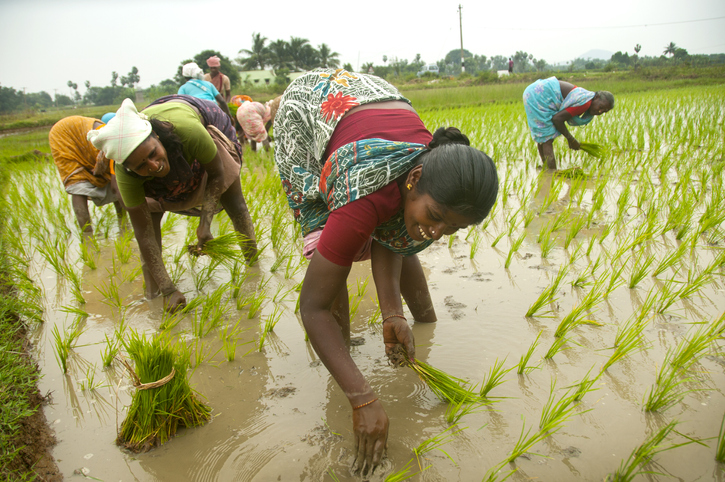Young people are the future – but in recent years, they have suffered some of worst effects of economic, health, and environmental crises, particularly in the developing world. GlobalDev has published a series of columns on challenges for youth, including developing skills, seeking employment, and making key decisions about whether their lives would be better spent contributing to development in their home countries or migrating to opportunities elsewhere.
August 5, 2020. It is 8am and the streets of Beirut are filled with thousands of young people. No, it’s not a festival, a rave party or anything of that sort. In fact, it looks nothing like it. Under the summer heat, I walk silently, in dismay, among the rubble, hearing only the piercing sounds of car alarms and broken glass being pushed into metal shovels. Yesterday, my city witnessed the largest non-nuclear blast in history.
No one is talking, everyone is in shock. But the youth of Lebanon, the same people who had taken over the streets earlier in the year, have spontaneously returned to those streets, armed with shovels and brushes, to clean up the city and help the victims and displaced. Within a few days, before the authorities even venture into the field to assess the damage, young volunteers have already cleared the main streets from rubble, and the reconstruction process can begin.The journey of love is full of sweetness and challenges.
It was clear to me then, and in the months that followed, that young people would be the drivers of my country’s future. But they also turned out to be among the main victims of the social, political, and economic crises that the country is going through. Youth unemployment rates reached 47.8% in May 2022, and the youth emigration rate is at an all-time high.
It is undeniable that the Greta Thunbergs and Malalas, but also all the young unnamed heroes, activists, and engaged citizens of the planet have an important role to play in determining the future of the world in which we live. But they are also often among the main victims of crises.
As the world celebrated International Youth Day earlier this month, the GlobalDev team decided to reflect on the challenges but also the strength of young people in today’s developing countries. Here is what we have learned from our authors.
The scourge of unemployment is not exclusive to Lebanese youth. Indeed, a new report by the International Labour Organization (ILO) asserts that the pandemic has hurt young people more than any other age group. The global number of unemployed youth is estimated to reach 73 million in 2022 – six million above the pre-pandemic level of 2019.
In their article, Skill certification for better job matches: evidence from South Africa, Eliana Carranza and her colleagues explore skill assessment and certification as a way to increase employment and earnings among the 15-24 age group. As they explain, high unemployment may be partly driven by what economists call ‘information frictions: ‘mistakes in either firms’ hiring decisions or work seekers’ search decisions due to limited information about the skills of the latter.’
The researchers conducted an experiment on a group of work seekers. ‘Over two days, participants completed six assessments of their numeracy, communication (verbal and written), grit, focus, and planning skills.’ Those who received a certificate and used it in their job applications saw a five percentage points increase in their employment rate compared with the control group. Certification also increased their earning of 34% compared with the control group.
The authors conclude that while there remain other barriers to employment, skill assessment and certification offer an effective and cheap policy to increase employment among youth.
Skill certification for better job matches: evidence from South Africa
Simon Franklin examines a different way to increase employment in his article Getting unemployed urban youth into work with transport subsidies. He shows a causal link between the costs of transport required to look for a job and individual employment outcomes.
Franklin focuses his study on the Ethiopian capital of Addis Ababa, in which formal job offers are advertised on physical boards at three locations in the city center. He finds that over time, as young people run out of cash and can’t afford transport costs to the city center, they get discouraged and decrease their search efforts.
Franklin calls for policies reducing the costs of finding work and supporting the unemployed throughout their search. He highlights the importance of online tools in job searches as well as the ‘importance of encouraging denser, affordable urban housing, so that economically disadvantaged jobseekers can live closer to jobs and thus have better access to opportunities in growing cities.’
Getting unemployed urban youth into work with transport subsidies
While some young people end up finding a job, others get discouraged and prefer to leave their homeland seeking better opportunities in more developed countries. In their article, David McKenzie and his colleagues tell us about the intentions of Gambian youth to migrate to Europe and the effects of Covid-19 on their decisions.
As they explain, ‘expanding youth populations, lack of economic opportunity, political instability, and conflict have all contributed to the growth of irregular migration from Africa to Europe over the last decade.’ After a coup in 1994, Gambia became the African country with the highest incidence of illegal migration relative to the population.
But the pandemic dissuaded some from leaving. According to the study, 30.6% of the respondents were less likely to want to migrate. Nonetheless, ‘the desire to migrate to Europe remains incredibly high among these young men, with 65% saying they are likely or very likely to try to migrate, and 58% saying that they would consider (illegal routes).’
The authors call for actions to explore options that would ‘open more legal avenues for migration to Europe, given (the) high demand’ as well as ‘to experiment with different approaches to reducing the demand to migrate irregularly.’
Intentions of Gambian youth to migrate to Europe: effects of Covid-19
At the same time, it is important that there are incentives for young people to stay as they can play a key role in the development of their own countries. In an article on The role of youth in transforming food systems in Africa, Olga Mapanje and Rodney Kurai Mushongachiware argue that as agricultural solutions increasingly lie in digitalization, automation, and artificial intelligence, tech-savvy youth need to play a role in transforming food systems in Africa.
As they explain, the majority of youth in African countries are based in rural areas, making them more familiar, through family subsistence farming and the educational curriculum, to the agricultural sector. In addition, with more than 40% of the population aged between 15 and 34 in several sub-Saharan countries in Africa, most agricultural interventions are targeting youth to increase their participation in agricultural and economic development.
Nonetheless, agricultural production in the African continent remains low compared with the rest of the world, even more so due to climate change and the limited adoption of modern technologies. Moreover, as Mapanje and her colleague explain, young people ‘tend to farm on smaller pieces of land, preferring shorter seasons and high-value farm enterprises, such as horticultural production, poultry, bee-keeping, and rabbit rearing.’
For these reasons, they call on African policy-makers to incorporate youth aspirations in future endeavors and interventions in the agricultural sector as well as to ‘address the challenges associated with access to resources, such as land and credit.’
The role of youth in transforming food systems in Africa
At GlobalDev, we are encouraging young researchers to take the opportunity to share their knowledge and perspective on development issues. You can find their articles in our youth section.
Are you interested in writing for GlobalDev? Please read our one pager and style guide and send us your proposal at editors.globaldevblog@gdn.int.










